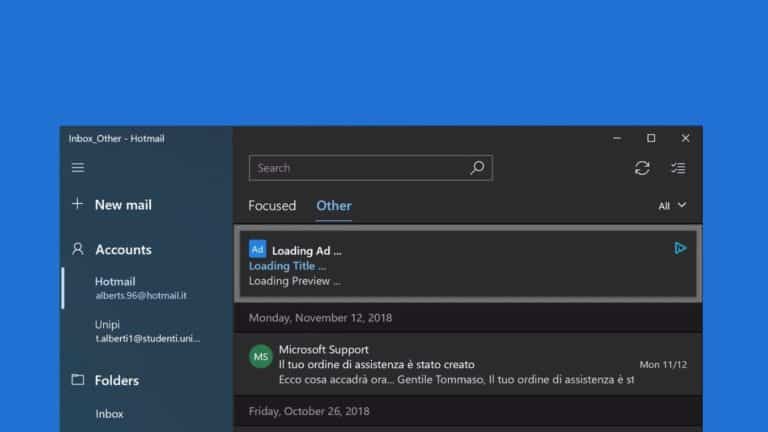Microsoft’s test was of short duration. Last Friday, Windows Insiders suddenly saw advertisements in Mail, the email client that comes standard with Windows 10. After a lot of negative comments on social media, Microsoft claims that it was a mistake.
Microsoft continues to look at ways to offer advertisements in Windows 10. Now that the software giant can no longer make money with triennial new Windows versions, it sees an opportunity by making permanent money with advertisements. Windows 10 already contains advertisements in the start bar that is enabled by default today. Over the past financial year, Microsoft has made 16 billion dollars in profits through advertising.
Last Friday, Windows Insiders suddenly announced via social media that a new update injected advertising into Windows Mail. At the very top of the mailfeed a commercial break appeared. It concerned Mail version 11605.11029.20059.0. Users in Brazil, Canada, Australia and India served the testers.
Mea culpa
You can click away the ad, but permanent removal is only possible if you have an Office 365 subscription. Microsoft had briefly put a FAQ online with some explanation about the advertising space. It explains that you can compare the advertising space with that of Gmail or Yahoo! Mail.
This was an experimental feature that was never intended to be tested broadly and it is being turned off.
– Frank X. Shaw (@fxshaw) November 16, 2018
Mea culpa: Frank Shaw, Corporate Vice President of Communications at Microsoft, has announced via Twitter that this position should never have been created. “It’s weird that the public FAQ page remained online for a few hours after Shaw’s response.
There is no doubt about this test: advertisements in Microsoft programs are coming up. The software giant wants to monetize his Windows 10-as-a-Service model and advertising is part of that. It has been secretly injecting advertisements into Windows 10 for years, but Windows Mail may be a step too far. It remains to be seen whether we will see this feature in the next major Windows 10-update from Q1/Q2 2019.
Related: Windows 10 October 2018 Update: 6 functions to try right away
This news article was automatically translated from Dutch to give Techzine.eu a head start. All news articles after September 1, 2019 are written in native English and NOT translated. All our background stories are written in native English as well. For more information read our launch article.